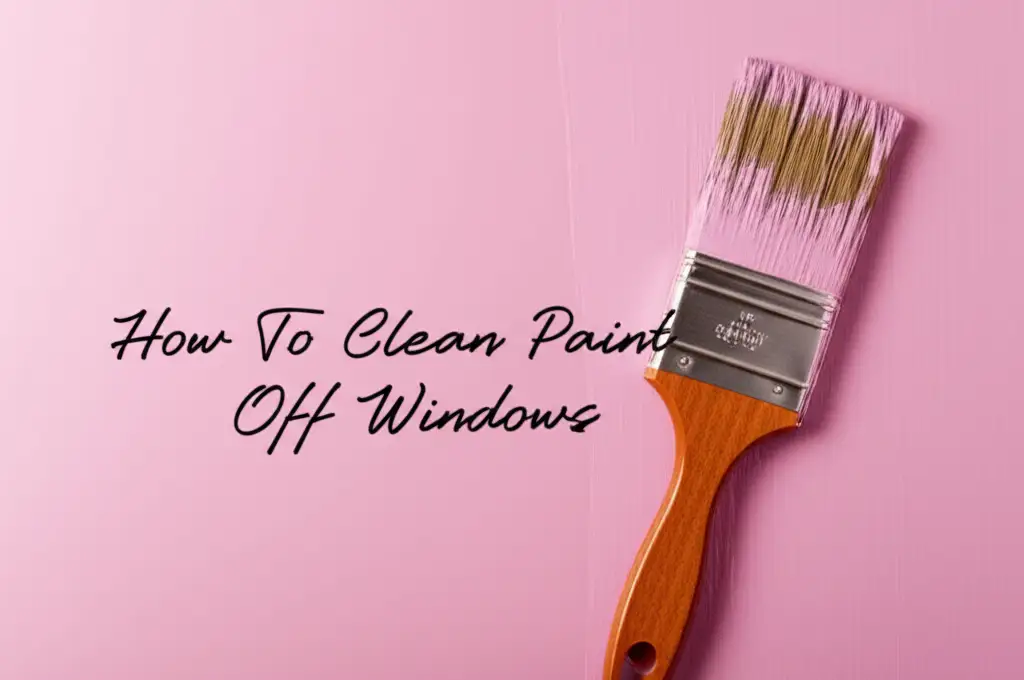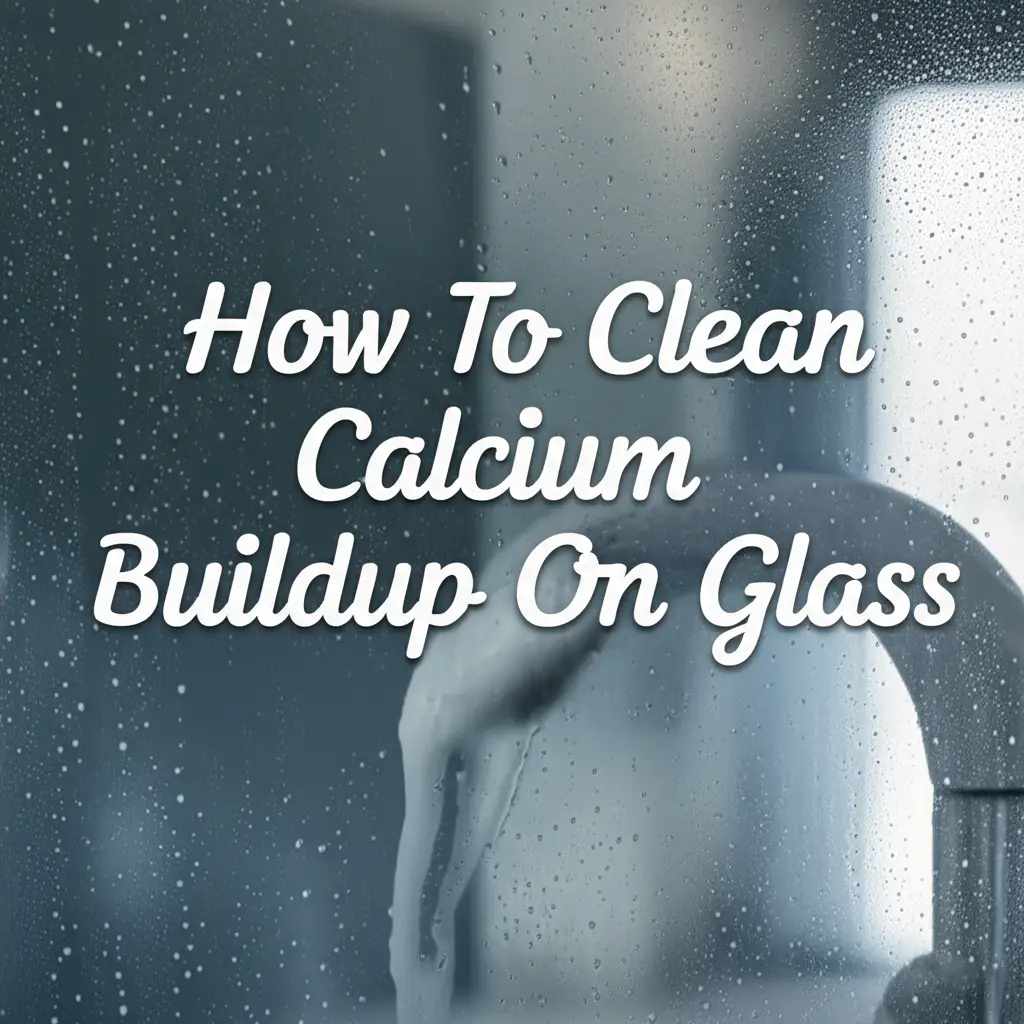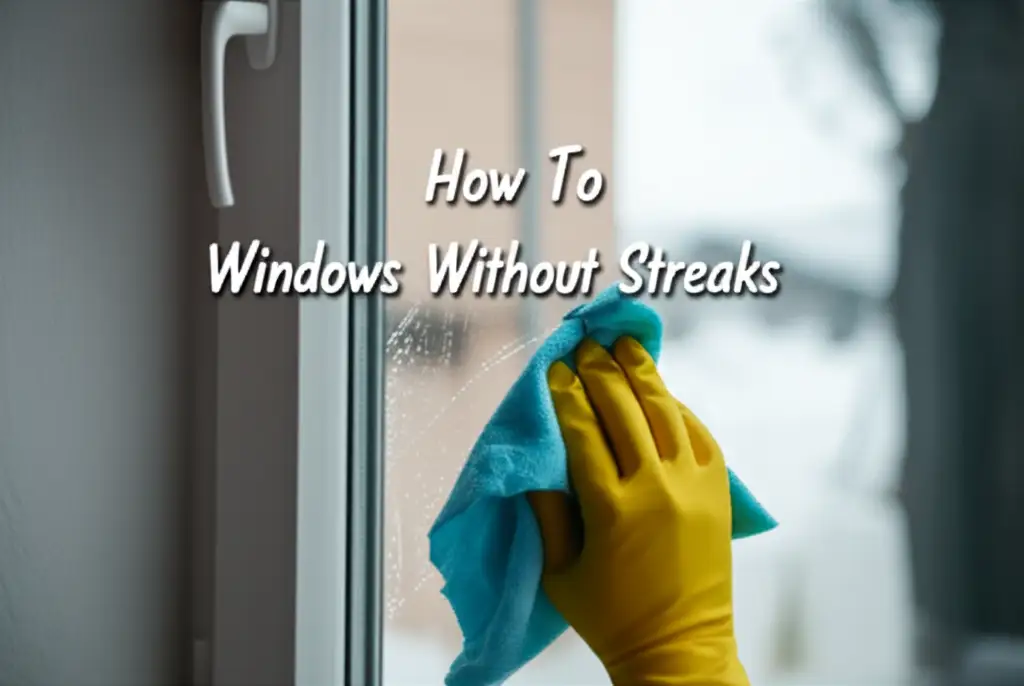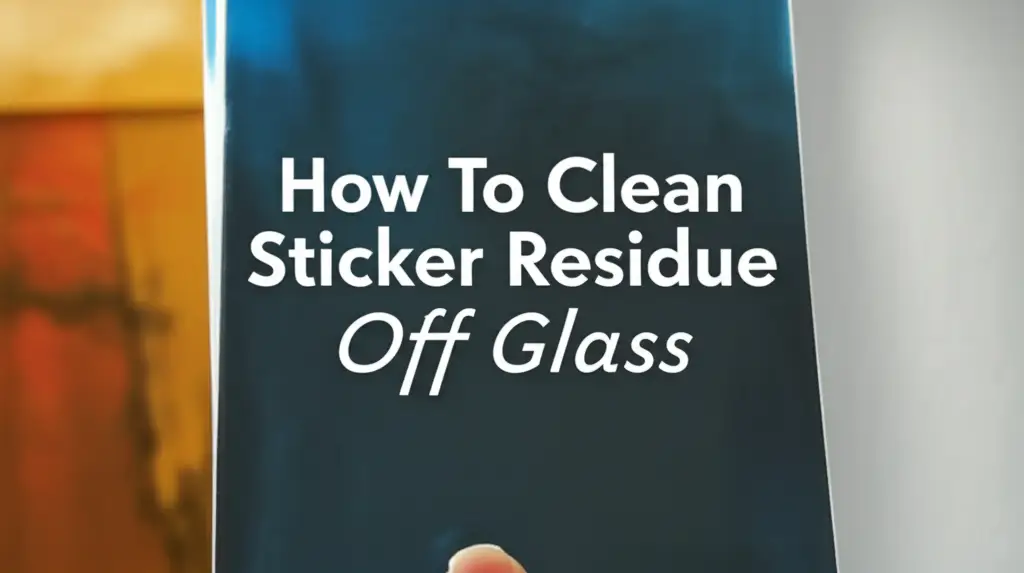· Home Cleaning · 20 min read
How To Clean Paint Off Windows

Easily Clean Paint Off Windows for a Clear View
Accidental paint splatters on your windows can feel frustrating. You might worry about damaging the glass or leaving a hazy mess. But removing paint from windows is often simpler than you think. With the right techniques and a little patience, you can restore your window panes to sparkling clarity. This guide offers practical steps to help you remove various types of paint from your windows safely and effectively. We will cover everything from identifying the paint type to the best tools and methods for a successful cleanup.
Takeaway
- Identify Paint Type: Know if you are dealing with latex, oil-based, or acrylic paint to choose the right method.
- Prioritize Safety: Always wear protective gear, like gloves and eye protection, when handling tools or chemicals.
- Test Small Areas: Before widespread application, test any cleaning solution or scraping method on an inconspicuous spot.
- Start Gently: Begin with the least abrasive methods for fresh paint before moving to stronger solutions for dried paint.
- Protect Frames: Use painter’s tape or careful movements to avoid damaging window frames and seals during the cleaning process.
You can remove paint from windows safely by first identifying the paint type, then choosing the correct tools. Use gentle scraping tools and appropriate solvents. Always test a small, hidden area first. Clean the window thoroughly after paint removal to ensure a clear finish.
Understanding Paint Types on Your Windows
Before you start cleaning, it is important to know what kind of paint splattered on your windows. Different paint types react differently to cleaning agents. Knowing this saves you time and prevents potential damage to your window glass. It also helps you pick the most effective removal method right away.
Identifying Latex Paint
Latex paint, also known as water-based paint, is very common. It dries quickly and cleans up with water when wet. You will often find this type of paint used for interior walls. If the paint on your window is recent and feels somewhat soft or rubbery, it is likely latex. This paint is generally the easiest to remove from glass surfaces. It often comes off with just soap and water or simple household cleaners.
Recognizing Oil-Based Paint
Oil-based paint is durable and provides a smooth finish. It takes longer to dry than latex paint. This paint resists water once it cures. If the paint feels hard and appears somewhat glossy, it might be oil-based. Removing oil-based paint requires specific solvents like mineral spirits or paint thinner. These solvents break down the oil in the paint, allowing you to wipe it away. Using the wrong cleaner on oil-based paint will not work.
Dealing with Acrylic Paint
Acrylic paint is water-soluble when wet but becomes water-resistant when dry. It is known for its versatility and vibrant colors. Acrylic paint behaves similarly to latex paint when fresh. However, once dry, it forms a tough, plastic-like film. This film can be more challenging to remove than dried latex paint. You might need a combination of gentle scraping and mild solvents for dried acrylic paint. Always be careful not to scratch the glass surface during removal.
Safety First: Essential Precautions for Window Paint Removal
Your safety is the top priority when cleaning paint off windows. Some methods involve sharp tools or strong chemicals. Taking proper precautions protects you from injury and your windows from damage. Always think about safety before you begin any paint removal project.
Protecting Your Hands and Eyes
I always recommend wearing sturdy gloves. Chemical-resistant gloves are best when using solvents like mineral spirits or paint strippers. This protects your skin from irritation. Eye protection, such as safety glasses or goggles, is also critical. Small paint chips can fly during scraping, and chemical splashes can harm your eyes. Never skip this step; your vision is too important to risk.
Ensuring Proper Ventilation
When working with paint removers or solvents, good ventilation is a must. These products often release fumes that can be harmful if inhaled. Open windows and doors in the area where you are working. If possible, use a fan to direct air currents away from you. This helps disperse fumes and keeps the air fresh. Proper ventilation reduces your exposure to any strong odors or chemicals.
Protecting Surrounding Surfaces
Paint removal can be messy. You do not want to solve one problem only to create another. Lay down old sheets, plastic tarps, or newspaper on the floor below the window. This catches any paint drips, scraped flakes, or spilled cleaning solutions. It is also wise to cover any nearby furniture or plants. This simple step saves you a lot of cleanup later. Protecting the window frames themselves is also important. If you are cleaning hard water off windows, you take similar steps to protect surfaces.
Testing Cleaning Agents
Always test any new cleaning solution or scraping method in an inconspicuous area first. This applies to both homemade remedies and commercial products. Apply a small amount of the cleaner to a corner of the glass or a hidden spot. Wait a few minutes to see if it causes any discoloration or damage. For scraping tools, try a light scrape in a small area. This confirms the method is safe for your specific window type. It helps prevent accidental damage.
Basic Tools and Materials for Removing Paint from Windows
Having the right tools makes the job much easier. You do not need a lot of specialized equipment to clean paint off windows. Many items are likely already in your home. These basic supplies form the foundation for most paint removal tasks.
The Power of a Razor Blade Scraper
A razor blade scraper is your best friend for dried paint. It provides a sharp edge to lift paint without scratching the glass. Always use a new, sharp blade. Dull blades can slip or gouge the surface. Hold the scraper at a shallow angle, around 30 degrees, to the glass. Apply gentle, even pressure. This tool works wonders on dried latex, oil-based, and acrylic paint. Remember to move the blade in one direction, not back and forth, to avoid scratching.
Essential Cleaning Cloths and Sponges
You will need soft cloths and sponges for wiping. Microfiber cloths are excellent because they are absorbent and lint-free. They will not leave fibers on your clean windows. Sponges are great for applying cleaning solutions or gently scrubbing fresh paint. Keep a few clean cloths handy for drying and polishing the glass after paint removal. Avoid abrasive scrub pads, as they can scratch the glass.
Warm Water and Dish Soap
For fresh paint, especially latex, warm water and a few drops of dish soap work wonders. This mixture acts as a gentle solvent. It softens the paint, making it easier to wipe away. Simply apply the soapy water generously to the paint. Let it sit for a minute or two, then gently rub with a sponge or cloth. This method is safe for all types of windows. It is your first line of defense against paint splatters.
Other Useful Items
- Spray Bottle: Fill a spray bottle with your cleaning solution for easy application. This helps saturate the paint evenly.
- Bucket: A bucket for warm water or rinse water is helpful. This allows you to rinse your cloths as you work.
- Plastic Putty Knife: For larger, thicker paint blobs, a plastic putty knife can be useful. It is less likely to scratch than a metal one.
- Old Newspapers/Drop Cloths: Lay these down to catch paint drips and protect your floor.
Gentle Methods: Tackling Wet or Fresh Paint on Windows
Catching paint spills early is a huge advantage. Wet or fresh paint is much easier to remove than dried paint. These gentle methods are often all you need. They are safe, effective, and require minimal effort. Always act quickly when you notice fresh paint on your windows.
Soap and Warm Water Technique
This is the simplest and safest method for fresh, water-based paint. I always start here. Dip a soft sponge or cloth into warm, soapy water. Use a few drops of mild dish soap mixed with warm water. Gently wipe the paint. The warm water helps to loosen the paint while the soap lifts it from the glass surface. You might need to make a few passes. Rinse your cloth often to avoid spreading the paint. This method prevents scratching and protects your window frames.
Rubbing Alcohol for Minor Splatters
Rubbing alcohol is surprisingly effective on fresh latex or acrylic paint. It breaks down the paint quickly. Apply a small amount of rubbing alcohol to a clean cloth. Gently rub the paint stain. You will see the paint start to dissolve. This method works well for small drips or smears. It evaporates quickly, leaving no residue. Rubbing alcohol is also safe for most window surfaces. It can also help with other types of window cleaning, such as removing hard water off windows.
Acetone-Free Nail Polish Remover (Caution!)
For slightly tougher fresh paint spots, acetone-free nail polish remover can be an option. It contains mild solvents that can loosen paint. Apply a tiny amount to a cotton ball. Dab it on the paint spot. Do not rub aggressively. Immediately wipe away the dissolved paint with a clean, damp cloth. Always test this in an inconspicuous area first. Some window tints or coatings might react poorly to it. This is a last resort for fresh paint if soap and alcohol do not work.
Using a Plastic Scraper for Soft Paint
Sometimes, fresh paint forms a thicker blob. A plastic scraper or an old credit card can gently lift this. Hold the scraper at a very low angle to the glass. Carefully push the paint blob off the surface. The plastic material is less likely to scratch the glass than metal. This method avoids spreading the wet paint. Always follow up with a damp cloth to clean any residue. This prepares the glass for a final wash.
Tougher Stains: Removing Dried Latex Paint from Windows
Dried latex paint can be a bit more stubborn than fresh paint. It forms a resilient film once cured. Do not despair; several effective strategies can help you remove it. These methods require a bit more effort and specific tools, but they are still manageable for most homeowners.
The Heat Method: Softening Dried Paint
Applying heat can soften dried latex paint. This makes it easier to scrape off. A heat gun on a low setting or a hairdryer works well. Direct the heat at the paint spot for about 30 seconds. Do not overheat the glass, as extreme temperature changes can cause it to crack. The paint will bubble or soften. Once soft, immediately use a plastic scraper or a razor blade scraper to gently lift the paint. The heat makes the paint pliable, reducing the effort needed for removal.
Razor Blade Scraper Technique for Dried Paint
A sharp razor blade scraper is essential for dried paint. Hold the blade at a very shallow angle, almost flat, against the glass. Push forward with even, steady pressure. The goal is to slide the blade under the paint edge and lift it off. Work in small sections. Do not press too hard or try to pry the paint off. This could scratch the glass. Always use new blades. Dull blades are ineffective and dangerous. For tasks like cleaning tilt-in windows, you might find this method useful for general gunk, too.
Denatured Alcohol or Rubbing Alcohol for Residue
Even after scraping, some latex paint residue might remain. Denatured alcohol is an effective solvent for dried latex. Apply it to a clean cloth. Rub the affected area firmly. The alcohol will help dissolve any lingering paint particles. Rubbing alcohol can also work, though it may take more effort. Always ensure good ventilation when using denatured alcohol. It can also be useful when you need to clean hard water off windows. Wipe the glass clean with a damp cloth afterward.
Vinegar Solution as a Natural Alternative
White vinegar offers a more natural solution for dried latex paint. It is acidic enough to soften the paint without harming the glass. Soak a cloth in undiluted white vinegar. Press it onto the dried paint spot. Let it sit for 10-15 minutes. This allows the vinegar to penetrate and soften the paint. After soaking, try to scrape the paint off with a plastic scraper. You can also scrub it with a non-abrasive sponge. Rinse the area thoroughly with water after cleaning.
Oil-Based and Acrylic Paint Removal Strategies for Windows
Oil-based and dried acrylic paints are more challenging to remove than latex. They form a much tougher, more resistant film on glass. You will need stronger solvents and more careful application techniques. Patience is key when dealing with these types of paint. Always prioritize safety and test your methods in a small area first.
Mineral Spirits for Oil-Based Paint
Mineral spirits are specifically designed to dissolve oil-based paints. They work by breaking down the paint’s chemical bonds. Apply a small amount of mineral spirits to a clean cloth. Press the cloth onto the dried oil-based paint spot. Let it soak for a few minutes. This gives the solvent time to penetrate the paint. Then, gently rub the area. The paint should soften and become easier to wipe away. You can also use a razor blade scraper in conjunction with mineral spirits for stubborn spots. Always ensure good ventilation when working with mineral spirits.
Specialized Paint Strippers (Use with Extreme Caution)
For very old or thick oil-based or acrylic paint, a specialized paint stripper might be necessary. These products are potent chemicals. They can effectively dissolve tough paint layers. However, they can also damage window frames, seals, or surrounding surfaces if not used carefully. Read the product instructions thoroughly. Apply the stripper sparingly to the paint with a small brush or cotton swab. Allow it to sit for the recommended time. The paint will usually bubble or soften. Then, carefully scrape it off with a plastic scraper. Immediately clean the area with water or a neutralizer as directed by the product. This method is a last resort due to its aggressive nature.
Combining Scraping with Solvents
Often, the most effective approach for tough paint is a combination of scraping and solvent use. First, try to remove as much paint as possible with a razor blade scraper. This reduces the amount of paint the solvent needs to work on. Then, apply your chosen solvent (mineral spirits for oil-based, or a specific acrylic paint remover). Let the solvent sit to soften any remaining paint. After that, scrape again or wipe with a cloth. This two-step process maximizes effectiveness. Remember to be gentle with the scraper to prevent glass scratches. Using specific cleaning methods, like those for cleaning Renewal by Andersen windows, can also involve a careful combination of techniques for different materials.
Post-Solvent Cleanup
After using strong solvents, proper cleanup is crucial. Wipe the area thoroughly with a clean, damp cloth to remove all chemical residue. You might need to rinse the glass several times. Leftover solvent can leave streaks or damage the glass over time. A final wipe with glass cleaner will ensure a sparkling, clear finish. Ensure the area is well-ventilated during and after cleanup.
Protecting Window Frames and Seals During Paint Cleanup
Removing paint from windows often means working close to the frames and seals. These parts of the window are typically made of wood, vinyl, or rubber. They are more delicate than glass and can be easily damaged by harsh chemicals or sharp tools. Protecting them is crucial to maintain your window’s integrity and appearance.
Taping Off Frames
Before you start any serious paint removal, consider taping off your window frames. Use painter’s tape, which is designed to provide a clean edge and remove easily without residue. Apply the tape neatly along the edge where the glass meets the frame. This creates a barrier. It protects the frame from accidental scrapes. It also guards against drips of cleaning solutions or paint remover. This simple step saves you extra cleanup or repair work on your frames. When cleaning specific types of windows like vinyl windows in a sunroom, this step is even more critical due to the material’s sensitivity.
Careful Scraping Techniques
When using a razor blade scraper, always direct the blade away from the frame. Hold the scraper at a shallow angle. Push it along the glass surface, guiding the paint towards the center of the pane, not towards the frame edge. If you are working near the frame, use smaller, more controlled strokes. A plastic scraper is also a safer choice for areas very close to the frame, as it is less likely to cut or mar the material. Take your time and be precise with each stroke. This careful approach prevents nicks and gouges on your frames. This applies to cleaning all window types, even something like double hung windows.
Avoiding Harsh Chemicals on Seals
Window seals are often made of rubber or vinyl. These materials can degrade quickly when exposed to strong solvents or paint strippers. Before applying any chemical cleaner, check its compatibility with rubber or vinyl. If uncertain, apply the solvent only to the glass, avoiding direct contact with the seals. If a chemical does get on the seal, wipe it off immediately with a damp cloth. For cleaning around seals, a mild soap and water solution is always the safest bet. This preserves the seal’s flexibility and prevents cracks or deterioration.
Cleaning Paint Off Window Frames (Separate Process)
If paint has indeed splattered onto your window frames, address it as a separate cleaning task. The method will depend on the frame material and paint type.
- Painted Wood Frames: For latex paint on painted wood, warm soapy water often works. For oil-based, a dab of mineral spirits might be needed. Be gentle to avoid removing the frame’s finish.
- Vinyl or Aluminum Frames: These are generally easier to clean. Use a soft cloth with warm soapy water. For stubborn spots, a non-abrasive cleaner safe for vinyl can be used. Avoid harsh scrubbing that could scratch the surface.
Always clean the frame separately, using methods appropriate for its specific material.
Post-Removal Cleaning and Window Care
After you successfully remove all the paint, your windows might still look a bit dull. There could be residue from cleaners or a slight haze. A final thorough cleaning is essential to restore their sparkle. This step ensures a streak-free, crystal-clear view. It also sets your windows up for easier maintenance in the future.
Thoroughly Washing the Glass
Once all paint is gone, wash the entire window pane with a standard window cleaner or a solution of water and white vinegar. This removes any leftover solvents, paint residue, or smudges. Spray the cleaner generously onto the glass. Use a clean, lint-free microfiber cloth or a squeegee to wipe it down. Start from the top and work your way down. Overlap your strokes slightly to avoid streaks. For large windows, a squeegee is highly effective for a streak-free finish. For windows that might be tricky to access, consider methods like how to clean outside windows from inside.
Polishing for a Streak-Free Finish
After washing, a final polish can make your windows truly shine. Use a clean, dry microfiber cloth or crumpled newspaper. Rub the glass in circular motions until it is perfectly clear and streak-free. The fibers in microfiber cloths trap any remaining moisture or particles. Newspaper works well because its ink helps to absorb moisture and polish the glass without leaving lint. Stand back and check the window from different angles to spot any missed areas or lingering streaks.
Inspecting Seals and Frames
Take a moment to inspect your window seals and frames. Ensure no cleaning solution residue remains on them. Wipe them down with a damp cloth if necessary. Check for any damage that might have occurred during the paint removal process. If you notice any nicks or scratches, consider a touch-up. Keeping seals clean and intact is important for your window’s energy efficiency. This is especially true for windows like double-pane windows, where seal integrity is crucial.
Preventing Future Paint Splatters
The best way to clean paint off windows is to prevent it from getting there in the first place!
- Use Painter’s Tape: Always use high-quality painter’s tape to mask off window glass before painting. Press the tape down firmly along the edges.
- Drop Cloths: Lay down drop cloths directly under windows to catch drips and spills.
- Be Careful: When painting near windows, use slow, controlled strokes. Avoid overloading your brush or roller.
- Wipe Immediately: If you notice a fresh splatter, wipe it off with a damp cloth right away. Do not let it dry.
These preventive measures save you a lot of effort in the long run.
Frequently Asked Questions (FAQ)
Can I use nail polish remover to clean paint off windows?
You can use acetone-free nail polish remover for very small, fresh paint spots. It contains milder solvents. Always test it first on an inconspicuous area of the glass. Never use acetone-based remover, as it can damage window tints or plastics. Wipe it off immediately after the paint dissolves.
How do I remove paint overspray from windows?
For paint overspray, start with a razor blade scraper held at a shallow angle. Gently scrape the tiny paint dots off the glass. For any residue, use a cloth with rubbing alcohol or mineral spirits, depending on the paint type. A final wash with glass cleaner will remove any haze.
Is a razor blade safe for all types of window glass?
A new, sharp razor blade is generally safe for standard, annealed window glass. Hold it at a very shallow angle (almost flat) to avoid scratching. Avoid using razor blades on tempered glass (often found in shower doors or car windows) or tinted windows, as they can cause damage or remove coatings. Always test a small spot first.
What if paint is on window seals or vinyl frames?
If paint is on window seals or vinyl frames, avoid using harsh chemicals or sharp scrapers. For latex paint, warm soapy water and a soft brush can work. For tougher paint, try rubbing alcohol or mineral spirits on a cloth, being careful not to let it sit. Always test a small area first to prevent discoloration or damage to the seal or frame material.
How can I prevent paint from getting on windows in the first place?
The best way to prevent paint on windows is proper preparation. Use high-quality painter’s tape to carefully mask off all glass panes. Press the tape firmly to ensure a tight seal. Lay down drop cloths on the floor directly under the windows. Always wipe up any fresh drips immediately with a damp cloth before they dry.
Conclusion
Cleaning paint off windows might seem daunting at first glance. But with the right approach, it is a straightforward task. You learned to identify different paint types. You now know to use the correct tools and safe methods. From gentle soap and water for fresh splatters to careful scraping and solvents for dried, stubborn marks, a clear view is within your reach. Remember to prioritize safety with protective gear. Always test cleaning agents on a small area first. Finally, always protect your window frames and seals from accidental damage.
With these techniques, you can confidently tackle any paint spill on your windows. You will restore the clear, unobstructed views you want. If you face a particularly challenging situation or have antique windows, consider professional help. For most everyday paint splatters, you are now equipped to handle the job yourself. Get your windows shining bright again!
- window cleaning
- paint removal
- glass cleaning




